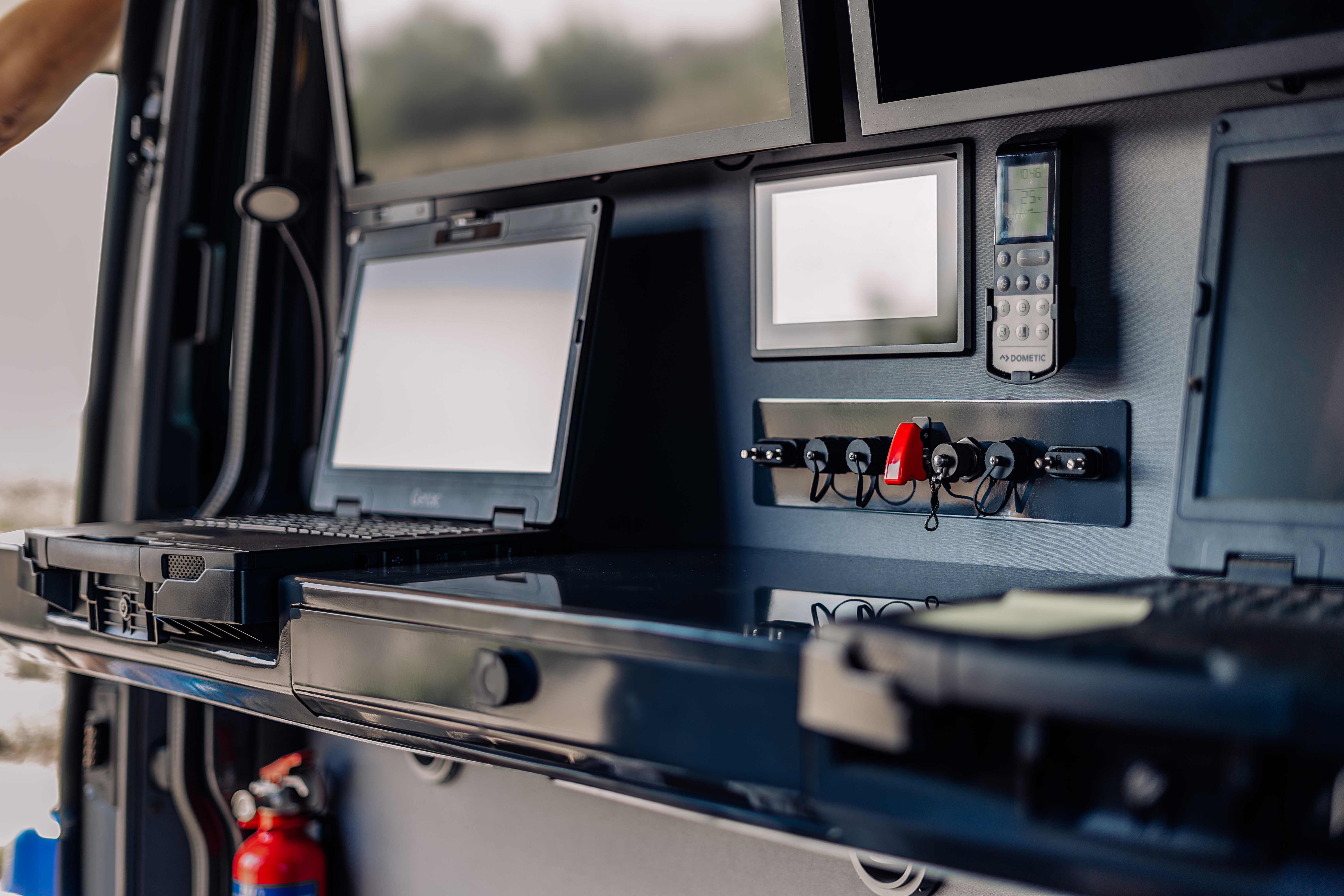TREND: Digitalization is changing security. The state will have to accelerate the pace even further
- Press

Digital armies of the future
The digitalization of the armed forces has been underway for more than twenty years and is changing the way armies conduct combat operations. Data and its processing are as important as physical weapons. “Modern armies have been digitalized since at least the 1990s and have since gone through several stages of IT modernization,” explains Imrich Petruf, Chief Defense Advisor at Aliter Technologies.
Advances in computing, AI, and cloud services enable faster and more efficient processing of information directly on the battlefield. The point of digitalization is not just the transition from analog to digital technologies, but the creation of a completely new system of military management and decision-making.
“More and more data is passing through the networks used on the battlefield,” adds I. Petruf, adding that combat information networks are a critical part of military operations. They connect various elements of the battlefield – from command centers to reconnaissance drones, various weapon systems, and even individual soldiers.
Soldiers equipped with wearable sensors and smart devices can exchange data about the enemy, changes in the terrain, and their own tactical positions in real time. A unified digital picture of the battlefield is created, which allows for faster and more accurate decision-making. Tactical cloud and edge computing are revolutionary in this regard.
Data is not processed only in central server rooms, but directly on the battlefield, where it is needed. This is shown by the experience of the war in Ukraine, where the battlefield is becoming transparent, meaning that opponents have an overview of themselves in real time. This allows the use of aerial reconnaissance assets down to the soldier level.
“The enemy immediately records every important change on the battlefield and a counteraction follows, for example, the destruction of a military formation. This reduces the possibility of actors remaining in a stable position for a long time.”

Public sector lags behind
While private companies see digitalization as a strategic advantage, the public sector is progressing more slowly. Some state institutions are still dependent on outdated IT systems that are not sufficiently interconnected or secured. “Several areas of public administration would deserve faster progress in digitalization, but the complexity of state systems is dramatically higher than in the case of a regular organization,” warns Michal Srnec, head of information security at Aliter Technologies.
According to analysts, the introduction of modern technologies into state administration is mainly hampered by bureaucracy, a lack of qualified IT professionals and concerns about cyber threats. Therefore, the digitization of the public sector requires a clear strategy from the government, investments in security and more intensive cooperation with the private sector.
Cyberattacks threaten infrastructure
Slovakia has seen a sharp increase in cyber threats in recent years, with attacks increasingly targeting important state infrastructure – government institutions, hospitals, banks and strategic enterprises. However, small and medium-sized enterprises are no longer safe, as they often neglect the protection of their own IT systems.
"The leading positions are occupied by ransomware attacks, phishing, exploiting vulnerabilities and brute force attacks. State institutions are often the target of so-called hectivist groups," states M. Srnec, according to whom cyber attacks are not just a matter of economic crime. On the contrary, they are becoming a tool of geopolitical struggle and hybrid warfare. State institutions are facing attacks that can paralyze critical infrastructure, disrupt energy networks or manipulate public opinion.
It is extremely important not only to deploy modern security technologies for protection, but also to create effective incident response strategies. Several companies offer comprehensive solutions from information security management to cyber attack analysis. The customer has everything under one roof - from the design of the solution to its long-term development. Risks can be identified and optimal protection can be designed.

Drones and unmanned systems
Unmanned systems have become an integral part of modern warfare. This can be seen in Ukraine, where both sides are trying to use the aforementioned technology to the greatest extent possible. “The technological shift in the field of unmanned systems is enormous, even faster than the development of mobile phones,” emphasizes I. Petruf.
In addition to traditional reconnaissance drones, autonomous attack systems are also increasingly used. These can operate over long distances without direct human intervention. In combination with AI, they can identify targets and decide on attacks in real time. It is generally assumed that small reconnaissance drones will be part of the armament of military units across the entire spectrum of armed forces.
Slovak companies
Thanks to NATO membership, Slovakia could use its potential much more, including with regard to private companies that do business in the field of armaments or information technology. Companies that are registered NATO suppliers win contracts faster and at the same time strengthen their international credibility.
“In some procurements, we can be addressed directly, which speeds up the procurement process. The status of a supplier to NATO also brings us a certain reputation,” concludes I. Petruf. He is convinced that if Slovakia wants to succeed in the global environment, it must invest in the development of new technologies, support the domestic defense industry, which will also increase the competitiveness of Slovak IT companies on the international stage.
Digitalization and cybersecurity are no longer just technological topics – they are becoming key pillars of national security. “The state’s support in the modernization of its own army is essential. But without domestic products being used in its own army, it is difficult to establish itself abroad,” adds the expert.
SOURCE: TREND


